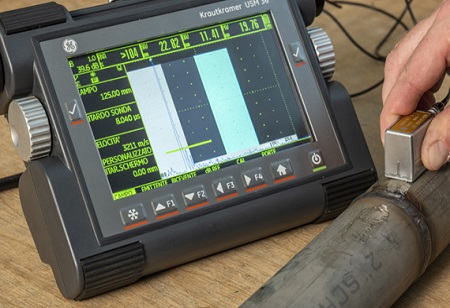Ultrasonic testing for flaws in solid materials has already been in use for decades and the technology and instrumentation for this kind of flaw detection are only getting better. So, what is ultrasonic flow detection and what does it involve? What makes it so reliable as to be used in the most critical industries?
The advantages and applications of ultrasonic defect detection plus answers to the above questions are all explained in this article, read on, to get all the information you may need on this non-destructive test method.
What is ultrasonic flaw detector?
An ultrasonic flaw detector is an instrument that uses sound waves to detect material defects such as cracks and voids internally and externally. It uses high-frequency sound waves which move through the material in a uniform manner and will only be disrupted in the presence of a defect.
Applications of ultrasonic flaw detector
Ultrasonic flaw detectors are used in many services, processing, and manufacturing industries such as;
In aerospace industries. Ultrasonic flaw detection is used to check the quality of solid materials for airplane manufacture and maintenance. It is especially important to constantly check for defects to prevent serious aeronautical disasters and accidents.
Pipeline for oil and gas industries. The integrity of petrochemical pipelines and tanks has to be maintained as any leakages can be detrimental for both the industry and the environment.
Welding industries in inspection to ensure smooth and problem-free finishings
Infrastructure that uses metal structures such as bridges and railroads. Ultrasonic testing can be used in checking the reliability and safety of these infrastructures.
